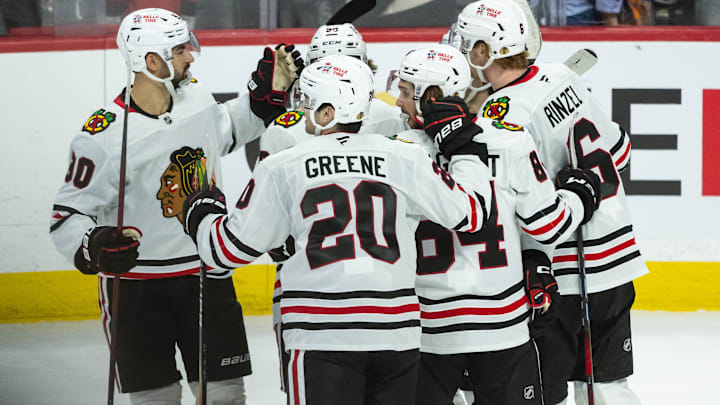Oh, boy, are we glad that’s over, or what? The Blackhawks struggled through another rough season, one in which nothing seemed to go right. But believe it or not, it took me about 10 minutes to find a few positives from what was a long season in Chicago.
Yeah, that’s my halfhearted attempt for a nod at one of my favorite books, A Long Way from Chicago by Richard Peck, something I’ve been raring to include lately. So, I got a, long, and Chicago in there, three words, which means I’m about halfway there.
Anyway, all lighthearted jokes aside, the Hawks technically improved from what they were a season ago. And in three distinct areas in which, I’ll be honest, I thought I’d only be talking about one of the subjects of this discussion below if you asked me about this team back in October.
Ironically enough, the subject of that discussion is one a contingent of fans will probably call me out for, considering their up-and-down play all season. There, that’s your hint. Anyway, let’s talk about the one thing that worked well for the Hawks all season long.
1 - Special teams
It’s not often when you see bottom-feeders like the Blackhawks have such good special teams but wow, did they rock and roll this season, or what? The Hawks power play clocked in a 24.87 conversion rate, over three percent better than the league average of 21.64.
Going forward, this should be a staple in their game and one that will start changing the trajectory of their matchups once they learn how to score in other situations.
The penalty kill can still use some work, but at 79.30, it was still almost a full percentage point higher than the rest of the league. Often, special teams are the hardest part of the game to master, but the Hawks clearly had no trouble making it work.
Should they prove their special teams weren’t a fluke, brace yourself for even better output in 2025-26.
2 - Goaltenders
Goaltenders don’t often enjoy good seasons when the hockey team playing in front of them is laughably bad. But let’s credit Arvid Soderblom and newcomer Spencer Knight, as they held down the net well despite the product they had to play behind.
Soderblom didn’t have the best numbers, but wow, what an improvement from 2023-24, as he finished with an 0.898 save percentage, a 3.18 GAA, and a 0.485 quality starts percentage. Knight ended the year with an 0.893 save percentage, a 3.18 GAA, and a 0.533 quality starts percentage.
Those are encouraging, considering Soderblom was as good as organizational depth when the season began and Knight was a backup for the Florida Panthers. No guarantees that the Hawks found their goaltending duo, but if they had, Knight and Soderblom could hold the net down for the next half-decade.
3 - Connor Bedard
Yes, Connor Bedard was a strength this season, despite his underperforming to expectations. One reason is that we’re one step closer to what will make Bedard take off in the NHL, and that’s a major win.
Bedard’s proven he’s not a center, judging from his inconsistencies defensively and his inability to win faceoffs. He’s a winger, plain and simple, and don’t be surprised when he’s playing winger 100 percent of the time. Putting him at wing could lead him to enjoy a season similar to what we saw from Alex DeBrincat in Detroit this season, and that could be his floor.
Still, even through a year in which Bedard could’ve performed better, he still led the Blackhawks in points, with 67. He scored 23 goals and logged 44 assists, showing off his ability as a playmaker. Now, imagine if Bedard had even a halfway decent team following him into the offensive zone.
Yeah, you get the gist of it - you can turn those 67 points into about 87 points, and if it happens next season, I’ll just shrug and say, “I told you so.”
